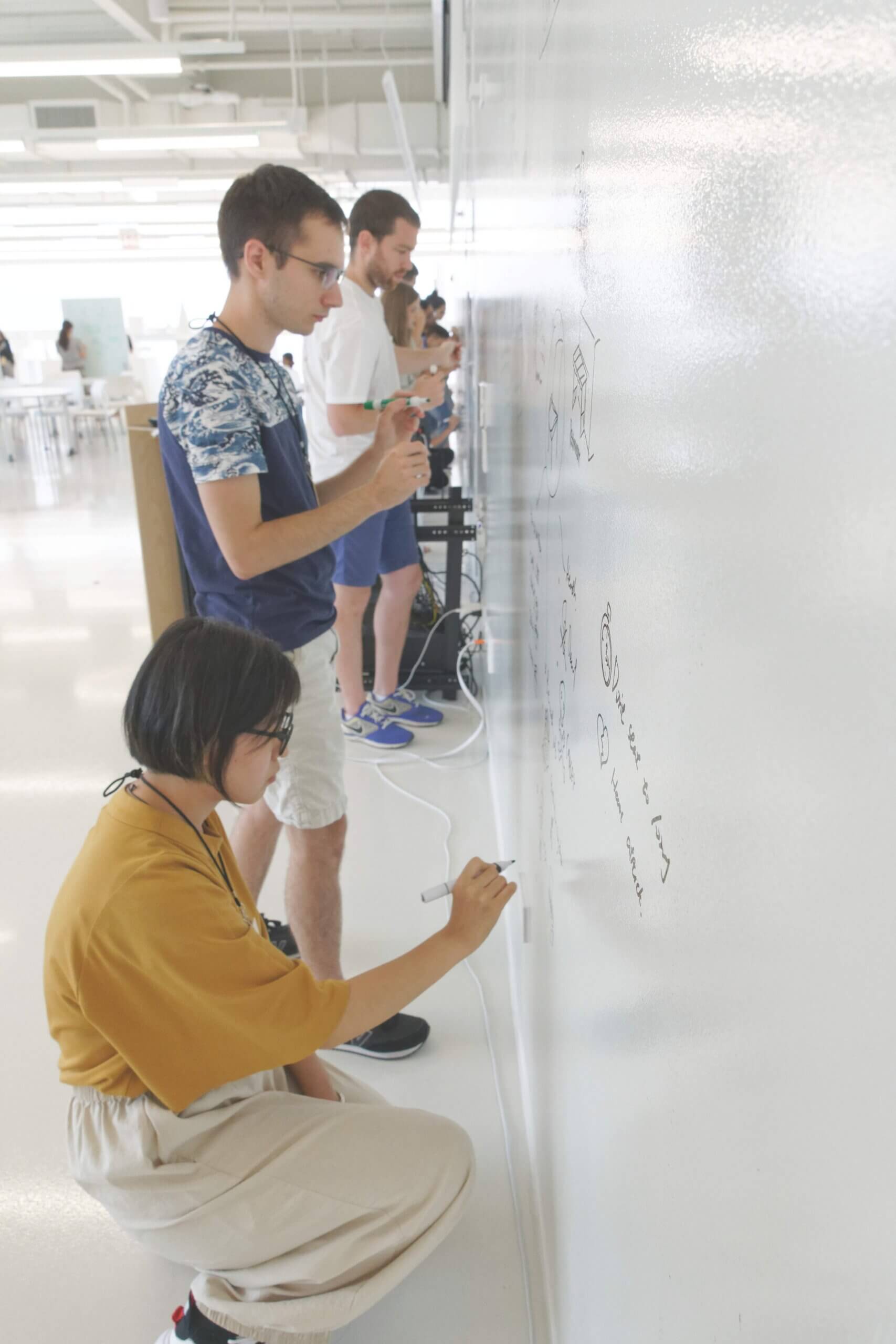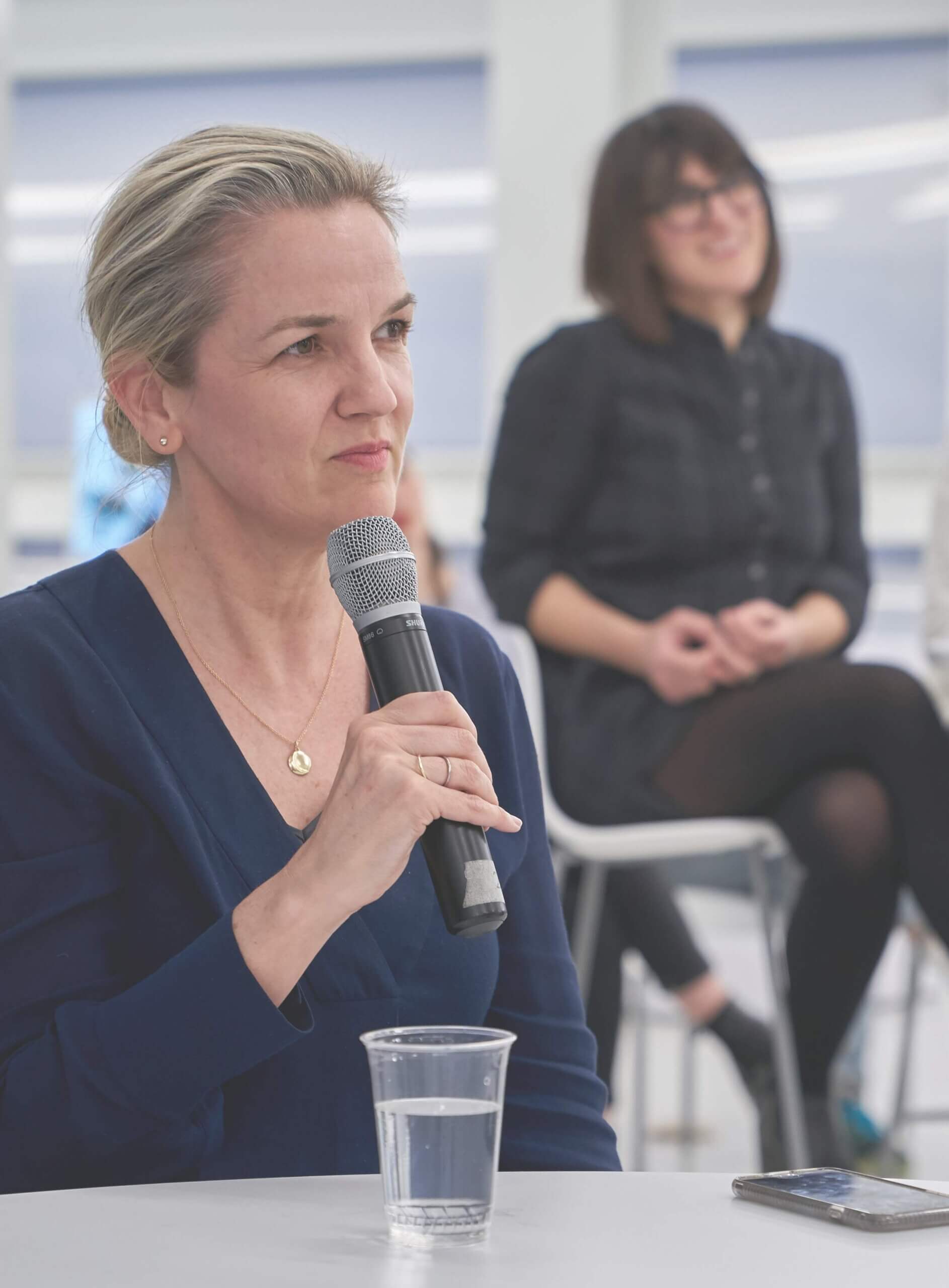Step 2: Grasp Two Vital, Urgent Truths About Design
Step 2: Grasp Two Vital, Urgent Truths About Design
And What They Mean For Your Organization
The research is in—so what’s next? Setting off on a new pathway requires conviction and informed leadership. What are the common threads running through the seven trends above? What are the realities driving necessary change in your organization? The ID Pathways Study identified two essential truths about design today. Grasping them will help you make the most of design’s role in your organization—and give you a competitive edge.
Truth 1: Integrity Needs to be Design's M.O.
The world around us keeps upping the ante on options and offerings. Not too long ago, practicing human-centered design required keeping an eye on three basic pursuits:
- Is it desirable? Will customers/users value the design? Will it meet a need?
- Is it feasible? Can we actually produce the design? Do the required technology, supply chain, operational structures, etc., exist, and if not, is the organization willing to make the necessary changes to achieve the design?
- Is it viable? Does the design make sense for our business? Will it make money?
This puzzle of finding the sweet spot at the intersection of desirability, feasibility, and viability was complex enough. But today new technologies and new political environments are expanding necessary design considerations beyond the longstanding triad. Increasingly, customers are demanding that the products and services they use reflect social responsibility through inclusivity, justice, and sustainability.

Extending the Triad
Design needs to demonstrate integrity. Extending the desirable, feasible, viable triad to consider inclusivity, justice, and sustainability allows design to take responsibility for this function and lead with purpose.

Today, design needs to demonstrate integrity. We need to ask:
- Is it inclusive? Is it desirable to society at large? Can it be accessed and used by as many people as possible, regardless of age, gender, disability, etc.? Have we considered diverse stakeholders as we designed this product, experience, or service?
- Is it just? Are we actively considering how our designs can feasibly exist within their ecosystems? How are we ensuring that basic human rights are upheld and anticipating unintended consequences? Are we developing systems that open access and promote equity?
- Is it sustainable? What does this design look like over the long term? Have we considered the whole lifecycle of this product/service?
In an era of conscious capitalism, purpose and mindfulness are at the forefront, right up there with—and tied inextricably to—how an organization measures its success (revenue, for example). Consumers want to do business with organizations that share their beliefs and values, and they engage and purchase accordingly.
In other words, organizations need to articulate and promote their values and take action on topical issues, including the environment, sustainability, animal welfare, community impact, and production and labor.
Design can facilitate conversations around pressing social concerns of the day, working with colleagues not only to define what is desirable, viable, and feasible with regard to those interests, but also to determine how to be inclusive, just, and sustainable with their offerings. And representatives of the organization must be prepared to explain their design decisions, both within the organization and publicly.
Our interviewees believe that design can empower organizations to operate with greater integrity and thus better relate to audiences and consumers.
“I do think that there’s going to be some more specialization that’s needed, to make sure that we create things properly. For instance, with Artificial Intelligence, there is so much complexity. Even giants in the industry have openly admitted that they don’t know how some of their bots operate. And they don’t totally understand their algorithms. And that’s kind of a terrifying thing, but also, I think it’s a cool opportunity for a designer to finish it and say, ‘What if I got involved and got more integrated into that space? Could I help a company make a better decision or could I help them design a more appropriate solution?’”
“A lot of times data science and UX aren’t working together to come up with algorithms that work for people with human limitations in strength and mind. They’re not even answering the questions that human beings need answered. There is a bias right now that computers and data science can replace people. I think user experience can come into that conversation and change it, so that we’re augmenting human capabilities by leveraging what machines are best at and still keeping what human beings are best at. We [as designers] can help to change the conversation, to make it a more effective and ethical play.”
Truth 2: Change—Particularly Seamlessness—Begins at Home.
For the last decade or more, organizations left and right have referred to themselves as “human-centered,” “customer-centric,” or “customer-obsessed.” It’s now widely understood that putting the customer at the center of the business enables an organization to stay relevant and responsive to evolving needs.
Yet there’s more to excellence than being customer-centric. To date, most of the efforts to express one’s commitment to customers have been turned outward. Countless organizations currently employ designers (in the multiples) dedicated to optimizing or innovating in externally focused ways, addressing elements that surround their business and are visible to the public, such as user experiences and product features. And these different design roles have been largely successful, hence, the impressive revenue and shareholder returns on design substantiated in the 2018 McKinsey Quarterly publication “The Business Value of Design.”
So it’s common now to find organizations that have embraced innovating on the enterprise’s core offerings. The Three Horizons Model of Innovation has been a guiding framework for many organizations, helping them to prioritize goals and gain resources for innovations. Similarly, organizations have committed to making customer experiences as satisfying and rewarding as possible, focusing on such aspects of their work as product, service, channel, brand, and customer engagement—hence the rise of Customer/User Experience (UX) departments.
The goal has become: let’s captivate customers by designing products and services that will integrate neatly into their routines or forge new routines, all of which exist for individuals and groups in different situations and environments that we need to understand.
The ID Pathways Study reveals, however, that embracing design for competitive advantage requires understanding and serving not only the customer and the customer’s world (and the accompanying desire for seamlessness), but also one’s own colleagues and organization. The longstanding adage that change—at least worthwhile, enduring change—begins at home relates to design and an organization’s core functions. Extending impressive returns on a “customer-centric” or “customer-obsessed” commitment requires applying people-centered design principles and practices internally, too—immediately. Doing so will concurrently help to achieve seamlessness.
Customer-centric means people-centric—so apply the ethic internally, too.
Focusing on either offerings or user experience misses the point of twenty-first century expectations. Your organization must merge these objectives in your workstreams and virtually everything you do, which means evolving from being customer-centric (an outward mindset) to being people-centric (a holistic mindset).
- Use design to examine internal operations in addition to optimizing external experiences.
- Challenge the foundational business systems on which your organization is configured.
- Explore optimization and innovation connected to the organization’s profit model, networks, structure, and processes (operations, employee experience, etc.), just as you’ve done for your offerings and the customer experiences surrounding them.

Our customers, ourselves. We all expect continuous experiences.
Clearly, the user experiences and perceptions you need to invest in are happening everywhere, all the time, among people within and beyond your organization.
Therefore, as our world becomes more integrated—with little to zero distance between our physical and digital selves—companies organized around the silos of their offerings (hardware versus digital, for instance) will no longer fly. As customers continue to demand more curated and customized continuous experiences, our internal processes also must become more seamless. Many different fields of study will need to have a voice in how to best craft these continuous experiences, both internal and external—from designers to analysts, programmers to social scientists. Designers can play an important role in facilitating action-oriented conversations about how organizations can step confidently as the digital distinction dissolves.
“I think there is a merging of marketing and design on the horizon. This is not to say that marketing subsumes design. It’s actually design subsumes marketing. . . . Marketing has shifted from being a megaphone to an intimate two-way conversation. The tools in design get you to that conversation more than the tools in marketing do.”
“Right now we have an experience design/digital experience group. There is also a brand group and a communication design group. At some point someone is going to realize that this all has to come together. Consumer insight, experience design, brand expression, and the actual product experience itself all need to be a continuum. They all need to be seen as one for us to become the company we say we want to be.
“There’s a certain attitude where we, as designers— we’re not really responsible because we don’t deliver it or sell it directly. We need to show up like responsible professionals. We are responsible for the quality of the experience people have with our products and services and their impression of them. So we need to take ownership and accountability for those things regardless of organizational silos and roles.”
Lead Researcher Brianna Sylver-Galvao explains 2 core design truths and what they mean for your organization.
Lead Researcher Brianna Sylver-Galvao explains four design roles that are most likely to help bring organizations into the future.
Lead Researcher Brianna Sylver-Galvao shares 4 tools to scale design for optimal value at your organization.
Strengthen your organization by recognizing these key developments in the landscape, and understanding how design competencies relate to them.